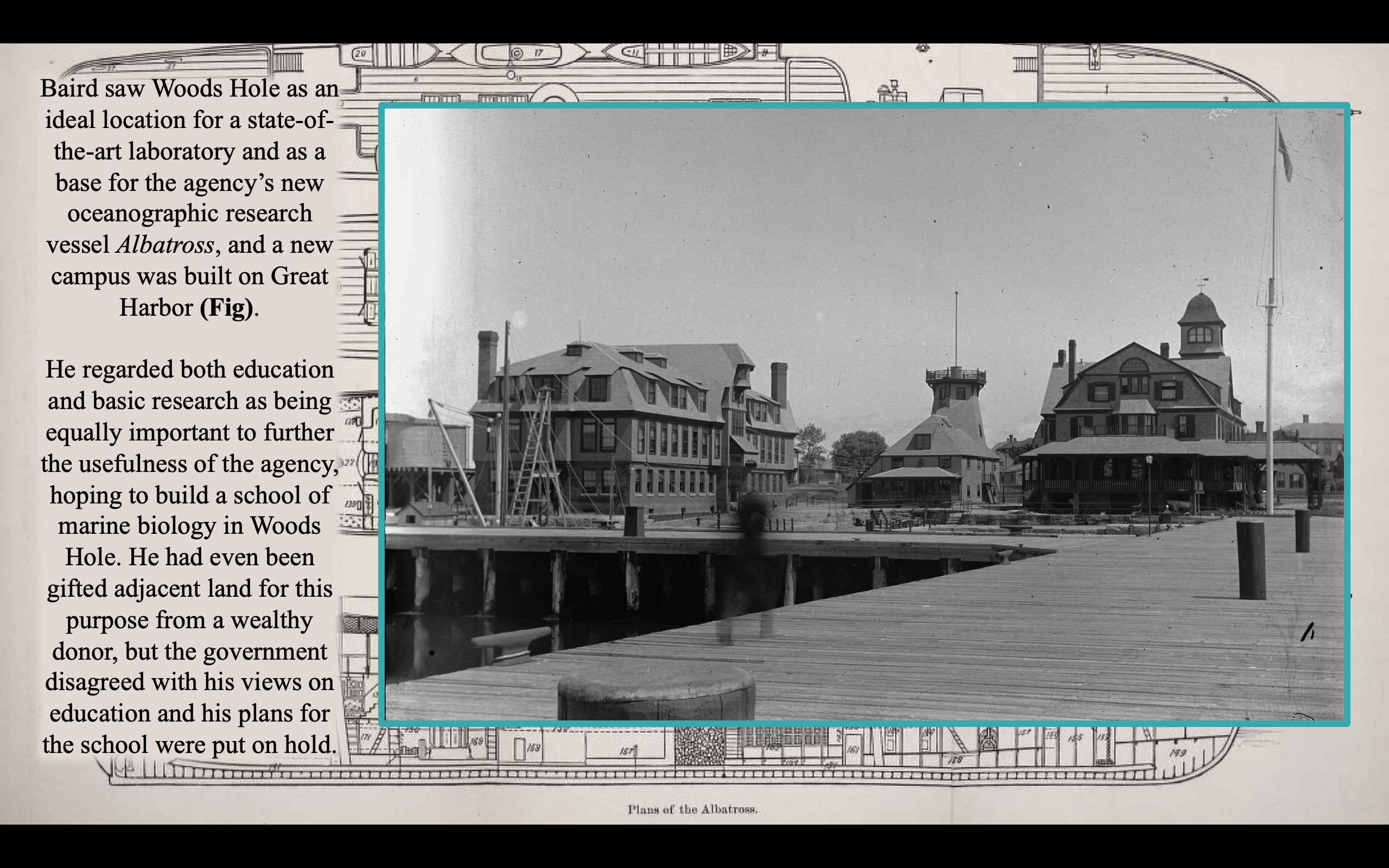150 Years of Woods Hole Science
14

Fig: Buildings Of US Fish Commission: Woods Holl Mass from Marine Biological Laboratory Archives https://hdl.handle.net/1912/17020 United States Fish Commission (Fisheries) ‘Refuge Point’ campus, in 1890. Laboratory on the left, saltwater pump house in center (with short tower and widow’s walk), ‘residence’ at right. Hatchery not visible. Looking east-northeast.
Background image: Report, 1885. p. 112, Plate II: Plans of the Albatross.
References: Galtsoff, P.S., 1962. The story of the bureau of commercial fisheries, Biological Laboratory, Woods Hole, Massachusetts (Vol. 145). US Department of the Interior, Bureau of Commercial Fisheries.
p. 26:
”During the formative years the final decision crystallized in Baird’s mind regarding the location and character of the permanent laboratory of the Fish Commission…The choice was between two locations: Newport, R. I., and Woods Hole.”
p. 28:
“Experiments with hatching marine fish eggs during 1880 showed that the water around Newport contained an excessive amount of sediment which settles on the eggs and materially impaired their development. Furthermore, the water of this part of Narragansett Bay was polluted by the drainage of a number of large cities (Newport, Fall River, Bristol, Providence, and others). The water around Gloucester was also found unsuitable because of high turbidity caused by sediment. The conditions at Woods Hole were totally different. Baird (1884) describes them in the following words: “the water is exceptionally pure and free from sediment, and where a strong tide, rushing through the Woods Hole passage, keeps the water in a state of healthy oxygenation especially favorable for biological research of every kind and description. The entire absence of sewage, owing to the remoteness of large towns, as well as the absence of large rivers tending to reduce the salinity of the water, constituted a strong argument in its favor, and the station was finally fixed upon for the purpose in question.”
pp. 27-28:
“Baird thought that the first permanent marine laboratory in the United States should also include a school of marine biology. His plans had to be modified to conform with the policies of Congress.”
Report, 1885. U. S. Commission of Fish and Fish and Fisheries, Report of the Commissioner for 1883, 11, - Background image